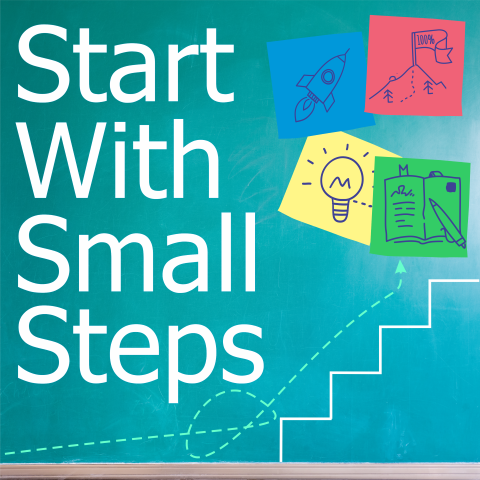Living with ADHD has felt like being in a constant whirlwind of thoughts, emotions, and distractions. But over the years, I’ve learned it’s not just possible to manage ADHD—it’s possible to thrive with it. My story is one of struggle, discovery, and eventual triumph, and I want to share what I’ve learned to inspire others to take control of their ADHD. These are the strategies, insights, and tools that have made a difference in my life.
Recognizing My ADHD Struggles
A Chaotic Start
Growing up in a chaotic environment with an alcoholic parent and very little stability made my ADHD challenges even harder to manage. I was disorganized, constantly procrastinating, and often burned out. I’d forget tasks, miss details in assignments, and struggled with time blindness. For example, I’d hyperfocus on something for hours, only to realize later that I’d missed important homework deadlines.
Early Realizations
By the time I was in grade school, I started noticing I wasn’t like the other kids. My struggles with focus, organization, and procrastination seemed bigger than theirs. Helping my mom while trying to keep up with school left me drained. That’s when I realized I needed to find solutions and create systems that worked for me.
The Strategies That Changed Everything
1. Organizing My Chaos
One of the first things I did was create a dedicated space where I could keep my life in order. I called it my “bulletin board of truth.” This was where I pinned tasks, schedules, and important reminders. It gave me a sense of calm in an otherwise messy world. Decluttering my room also helped—I removed anything that could distract me, like toys or knick-knacks, to create a space where I could focus.
2. Taking Small Steps
I found that breaking down overwhelming tasks into smaller steps made them more manageable. For example, instead of panicking about writing a whole research paper, I’d focus on one step at a time: gathering books, creating an outline, and then writing section by section. This approach, which I now talk about in my podcast Start with Small Steps, became my go-to strategy.
3. Building Routines and Reflecting
Establishing daily rituals made a huge difference. I’d plan out my day each evening, reflecting on what worked and what didn’t. This gave me a sense of control and helped me stay on track, even when things felt overwhelming.
My Tools and Techniques
1. Embracing Technology
Technology has been a lifesaver for me. Apps like Todoist, Fantastical, and Notion helped me keep track of tasks, schedules, and projects. With Todoist, I could set multiple reminders for deadlines, while Fantastical helped me time-block my day. These tools turned chaos into structure.
2. Color Coding and Time Blocking
I started using color-coded notes to prioritize tasks. Urgent ones were in red, less critical ones in green. Time blocking also helped me map out an ideal week, giving me a roadmap to follow even when distractions hit.
3. Movement and Nature
When I’d lose focus, moving around helped reset my brain. Taking short walks or even just observing nature gave me the mental break I needed to come back to tasks refreshed.
Tackling Emotional and Impulsive Challenges
Managing Impulsivity
Impulsivity was a big challenge for me. I learned to give myself waiting periods before acting on decisions, like making purchases. For example, I’d put something in an online cart and wait a day or two. Often, the urge to buy it would fade.
Learning Emotional Control
Over time, I developed the habit of delaying my emotional responses. If I felt angry or frustrated, I’d give myself a day before reacting. This simple practice improved my relationships and helped me handle conflicts with a clearer head.
Turning ADHD into My Superpower
Leveraging Hyperfocus
Instead of fighting my hyperfocus, I started using it to my advantage. I’d save tasks that needed deep concentration, like writing, for times when I was naturally in the zone.
Accountability is Key
I also discovered that I’m more likely to stick to goals when I’m accountable to others. Whether it’s committing to a hike with a friend or tying my goals to someone else’s needs, this approach has been a game-changer for me.
Reframing ADHD
Through research and experience, I’ve learned to see ADHD differently. It’s not just a disorder—it’s a different way of thinking. For example, I realized that my brain craves stimulation, which explains why I need a lively, engaging environment to stay productive.
Lessons and Takeaways
1. Small Changes Matter
Managing ADHD starts with small, incremental changes. Whether it’s organizing your workspace or using a task management app, every little step adds up.
2. Find What Works for You
The right tools and strategies make all the difference. Experiment until you find what aligns with your lifestyle and needs.
3. Lean on Support
Accountability and support from friends or family can help you stay on track. Don’t be afraid to ask for help.
4. Play to Your Strengths
ADHD has its advantages—creativity, energy, and hyperfocus. Recognize these strengths and use them to your benefit.
Conclusion
My journey with ADHD has been anything but easy, but it’s also been incredibly rewarding. By taking small steps, embracing tools, and reframing how I view ADHD, I’ve been able to turn challenges into opportunities. If you’re navigating your own ADHD journey, know that you’re not alone—and that with persistence and the right strategies, you can build a life you’re proud of. As I always remind myself and others, progress begins with a single small step.

